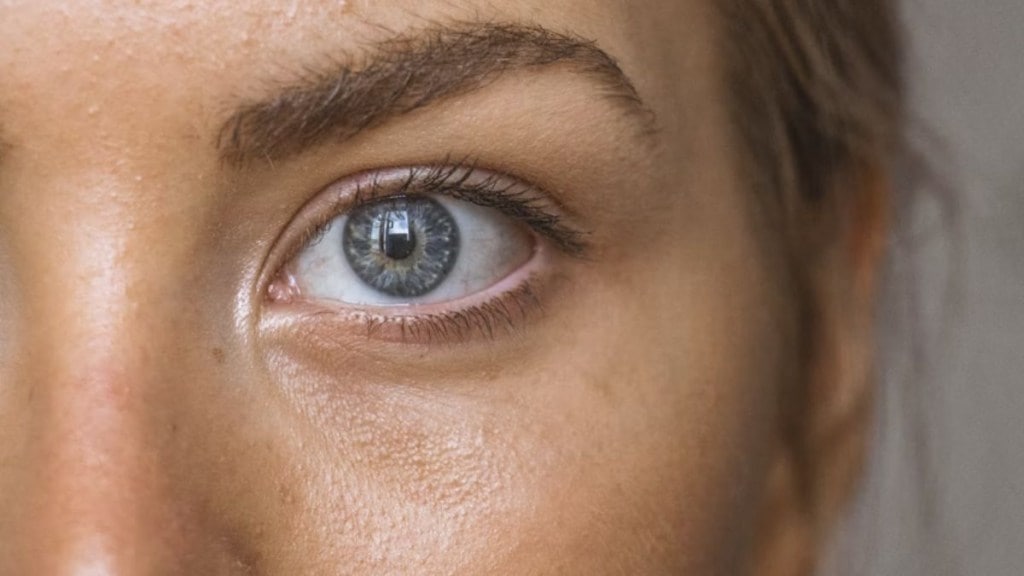Have you ever noticed small spots, threads, or web-like shapes moving across your vision? These are called eye floaters. As we get older, these eye floaters often appear more frequently. Though they don’t cause pain or major problems, many people tend to ignore them or don’t think much about them.
But experts warn that floaters can sometimes be a warning sign of serious health problems, especially for people with conditions like high blood pressure and diabetes. These diseases can damage the tiny blood vessels in the eyes, leading to vision issues or even permanent damage if left unchecked. But what is the cause behind eye floaters? We got in touch with Dr. Pawan Gupta, Senior Cataract and Retina Surgeon at Eye 7 Hospital in New Delhi, who shares insights on the same.
What causes eye floaters?
Dr. Gupta explains that eye floaters happen when tiny clumps or strands form in the vitreous, the jelly-like substance inside your eye. These clumps cast shadows on the retina, the light-sensitive part at the back of your eye, which is why you see floaters.
For most people, floaters happen naturally as part of ageing. The vitreous slowly shrinks and pulls away from the retina, creating these spots in your vision. Usually, they are harmless and don’t need treatment.
But if you suddenly notice more floaters, flashes of light, or loss of vision, it could be a sign of a serious eye condition, and you must see a doctor immediately.
How does high blood pressure cause floaters?
Dr. Gupta further explains that high blood pressure puts extra strain on the tiny blood vessels in the retina. Over time, this can cause damage called hypertensive retinopathy.
“When the blood vessels in the retina leak or burst, blood can spill into the vitreous, causing floaters to appear suddenly,” says Dr. Gupta. “High blood pressure can also block the veins in the retina, leading to blurred or lost vision,” he further said.
High blood pressure often shows no obvious symptoms, and sudden floaters may be the first sign of damage to your eyes.
Is diabetes a hidden cause too?
Diabetes can also harm your eyes, especially if blood sugar levels are not in control. High glucose levels damage the delicate blood vessels in the retina, causing diabetic retinopathy.
Early diabetic retinopathy may not affect vision much, but over time, the body creates abnormal new blood vessels that can bleed into the vitreous, leading to floaters and vision changes.
In serious cases, diabetic retinopathy can cause the retina to pull away from the back of the eye, which is a medical emergency that requires immediate treatment.
“If you have diabetes and notice floaters with flashes of light or a shadow blocking your vision, you should see an eye specialist right away,” warns Dr. Gupta.
So, how should you protect your eyes?
According to Dr. Gupta, with proper care, eye problems caused by high blood pressure and diabetes can be managed. “Regular eye check-ups are important, especially if you have these health conditions. Early detection of any changes in the retina can prevent serious damage,” he shares.
As per Du Gupta, people with high blood pressure should maintain a healthy lifestyle, eat less salt, exercise regularly, and keep their blood pressure under control.
Diabetes patients need to carefully monitor and manage their blood sugar levels, follow a balanced diet, and take medicines as prescribed.
If floaters are caused by diabetic or hypertensive retinopathy, treatments may include eye injections, laser therapy, or, in some cases, surgery to protect vision.
When should you see a doctor?
Floaters alone are not always a cause for alarm, but you should not ignore them, especially if they appear suddenly or increase in number.
“Don’t delay an eye exam if you have high blood pressure or diabetes and notice any new vision problems,” advises Dr. Gupta. “Early care can save your sight.”
Eye floaters might seem like a small annoyance, but they could be a sign of bigger health issues. Paying attention to changes in your vision can help protect your eyesight for years to come.







